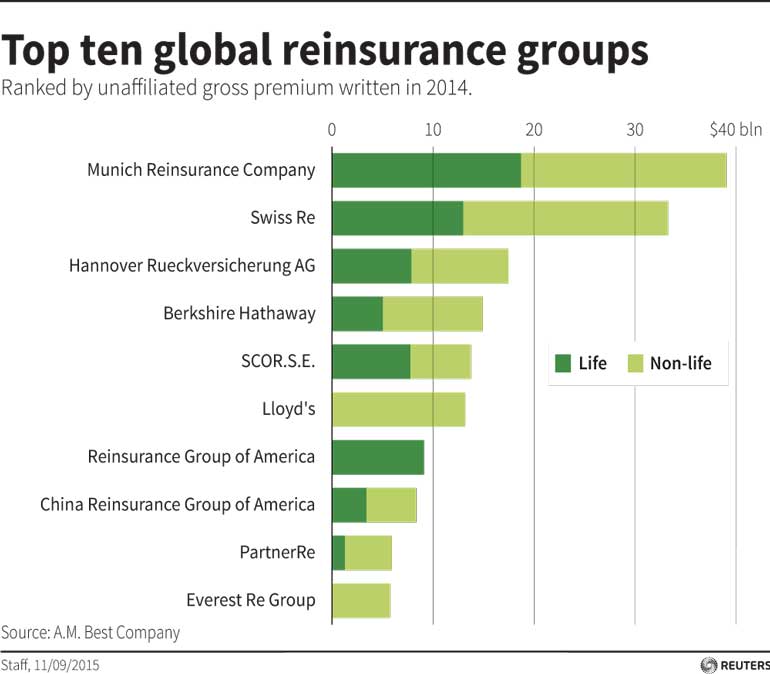Sunday Dec 21, 2025
Sunday Dec 21, 2025
Thursday, 17 September 2015 00:00 - - {{hitsCtrl.values.hits}}

Monaco (Reuters): Major reinsurers like Munich Re , Swiss Re, Hannover Re are looking to new markets and selling more cover to existing clients to ease price pressures after several years of falls, they said at their annual meeting in Monte Carlo this week.
“I believe that 2016, and I may regret forecasting this, could actually mark the bottom of the cycle,” Hannover Re Chief Executive Ulrich Wallin told a news conference at the meeting.
Reinsurers act as a financial backstop for insurance companies, helping them pay for large damage claims from hurricanes or earthquakes in exchange for part of the premium.
Munich Re board member Thomas Blunck said new products such as so-called cyber risks provided opportunities for growth, and the firm was working with major clients to develop products for issues such as breaches of privacy.
“It is a highly complex and dynamic risk. It is not easy to imitate and that is possibly an entry barrier to smaller insurance and reinsurance companies,” Blunck said.
A report this week said cyber insurance could triple to $ 7.5 billion in annual premiums by 2020.
Swiss Re also said simply closing the protection gap - by making more natural disasters and other risks insurable - could help stabilise price levels.
Some observers see a risk of greater losses from natural catastrophes after several benign years. Natural catastrophes in emerging markets also tend to be under-insured, providing a growth opportunity.
Munich Re said growth in primary insurance would accelerate to 3% per year in 2015-2017 from 1% in the previous seven years, with Asia-Pacific and Latin America leading the pack. This would help underpin reinsurance growth of 1 percent per year in 2015-2017, it said.
Hannover Re also said increased demand should improve pricing.
However, reinsurers’ hoped-for rise in demand may not happen quickly and with enough volume to make a big dent in the current over-supply of reinsurance capital, which continues to drive down prices.
Credit ratings agencies still expect price declines in single digit percentages, compared with double-digit falls in the past few years.
Reinsurance prices and returns have dropped in recent years, driven down by reduced demand as insurance company clients chose to keep more risk, and profit, on their own books.
Cheaper products such as catastrophe bonds have also provided an alternative to traditional reinsurance and attracted yield-hungry institutional investors, who have enjoyed a windfall from years of below-normal damage claims from hurricanes or earthquakes.
Munich Re said that while the pressure on reinsurance prices had lessened, it had not ended.
“This is not a trend that goes into the reverse direction; it was (just) a slower rate reduction,” Munich Re board member Torsten Jeworrek said.
“Price competition is not over,” he added.